Metroid has always been a bit of an anomaly in Nintendo’s library. Where I was used to bright and cheery worlds in Nintendo’s games Metroid stood in stark contrast with its sci-fi theme and terrifying titular enemies. But that is also what made it so compelling. The game was unlike anything I had experienced up to that point and its impact is still felt today. Metroid was a truly revolutionary game and one that still influences game design to this very day. This is one of the greatest games ever made.
Metroid’s place in the early NES lineup is significant. For the first year or so most the system’s library consisted of simple arcade ports or single screen platformers. But in 1987 along with Kid Icarus and the Legend of Zelda that started to change. The kinds of sprawling adventures these titles represented were a revolution in the industry and have influenced gaming to this day. Metroid in particular was amazing and unlike anything seen before with its sci-fi setting, creepy atmosphere, and sense of scale. This year marks thirty years since its release and it is still just as entertaining as ever.
It’s amazing how Metroid’s opening moments are so brilliantly designed. At the onset you can go left or right. By going right you will run into a passage too small to pass. Going left leads to the morph ball but it isn’t immediately obvious how to use it. But once again you are confronted with a narrow trail as the only means to escape. The immediate reaction is to duck at which point Samus will morph into a ball. This is all deliberate and is a silent tutorial about the game’s mechanics.
It also serves another purpose; teaching you to revisit areas after every significant event. Early on you will see many unreachable areas; this is deliberate. With every new upgrade such as the high jump boots and ice beam new areas become accessible. As you gain new upgrades it becomes critical to revisit nearly every inch of the map. The game does not hold your hand and leaves you to your own devices. That Nintendo placed enough trust in players to figure it out eventually speaks volumes to their confidence in the game’s design.
Metroid’s nonlinear sense of progression differs from Zelda in that there is no guidance whatsoever. It is possible to stumble onto the path to the game’s final area early which will reveal the ultimate objective, that of defeating two bosses (Kraid and Ridley). How you go about doing so is left in your hands. You can skip many of the power-ups and enter Torian underpowered, which I imagine many did. It’s a far cry from Zelda where most of its items are mandatory to reach Death Mountain. That the game manages to be just as complex as that title without most of its quality of life features (such as a subscreen) is incredible.
Part of what makes the series so fun is sequence breaking. Later games offer a guided path that ensures you’ll see most of their content. Metroid does not. It drops you into its world without a hint of guidance and expects you to figure it all out. Many of its items are found by happenstance. Truthfully the concept of sequence breaking does not apply here as it is not as if there is a “right” way to complete the game.
While Metroid is thoughtfully designed it is far from perfect. The most glaring flaw is the lack of a map. Planet Zebes is a massive world, possibly bigger than anything else up to that point. Navigating around its similar rooms and corridors can be tricky, especially when it comes to bombing weak floors to find items. Considering Zelda both offered maps for each dungeon and auto mapped as you progressed makes its absence even more egregious. With context it can be excused; the industry was still learning at the time. But it doesn’t make it any easier to accept.
Luckily Metroid becomes easier as you progress to an extent. As you amass new equipment such as missiles, the screw attack, and energy tanks it becomes very difficult to actually die. Death does come with a very heavy penalty. Regardless of how many energy tanks you have you’ll begin the game with a mere thirty health. Building back up to full power is an arduous and repetitive task, especially by the end of the game. The game’s true difficulty lies in its many secret passages, many of which are crucial to progression. These can lie anywhere, necessitating bombing and shooting every possible brick. It’s tedious but necessary and something that I’m still amazed gamers were able to figure out back then.
In Closing
Metroid’s influence on the video game industry cannot be denied, especially in the last ten years. By today’s standards it might seem primitive but every great series has to start somewhere. Metroid is every bit the classic it has been hailed as and still worth playing today.


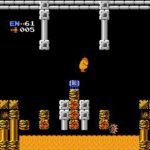
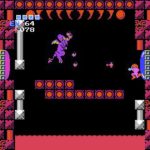
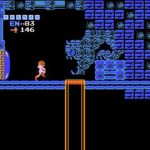
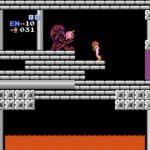
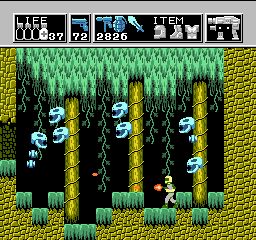
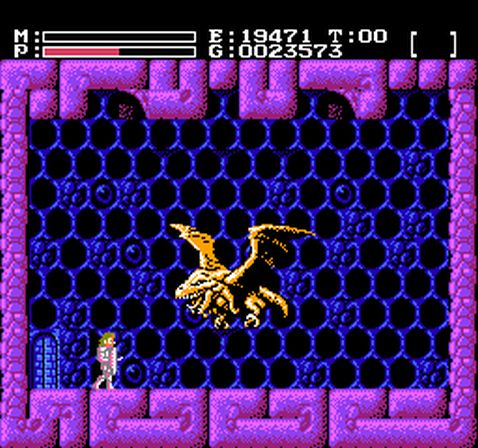

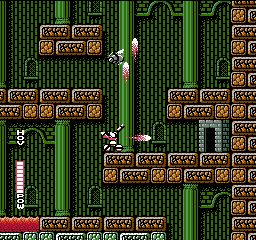
3 thoughts on “Metroid”